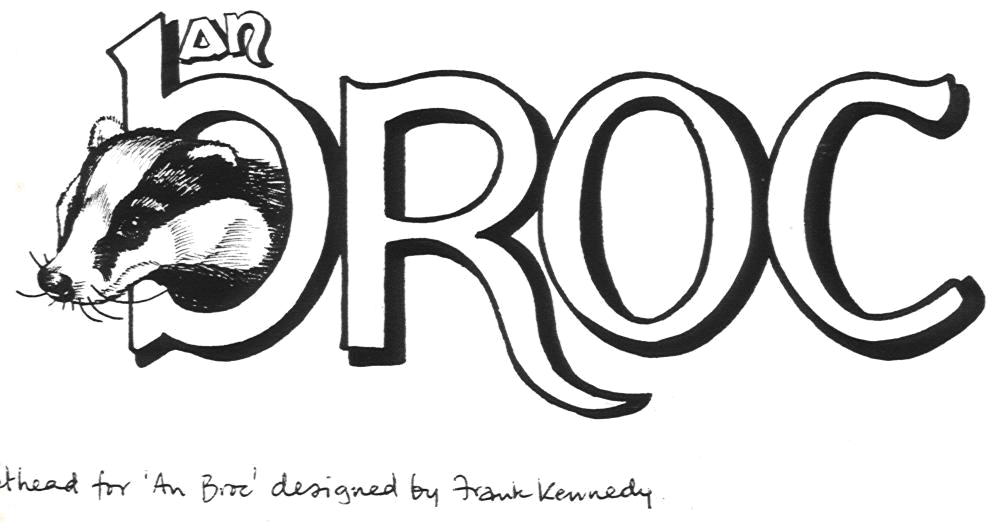
|
|
|
An Broc (The Badger) is the newsletter of Badgerwatch (Ireland) Winter 2016
086-3951907 |
Farmers take precedence over badgers being cruelly killed: Agriculture Minister. 2 Dec 2016 — "In the order of priority, the livelihood of farmers and their herds [of beef and dairy cows] takes precedence" - Agriculture Minister Michael Creed crassly explaining why a cruel cull of thousands of supposedly protected badgers is continuing across Ireland. Minister Creed was responding to a Dail Question from Clare Daly TD who, wearing a "Not Guilty" badger t-shirt, told him that there is no conclusive evidence that badgers are responsible for spreading TB to cattle. |
ACTION ALERTS Minister Michael Creed + 353 (0)1-607 2000 loCall 1890-200510 Minister for Agriculture, Kildare St. Dublin 2 Email:michael.creed@oir.ie Department of Agriculture Please write to the Minister for Arts, Heritage and Gaeltacht Affairs and to the National Parks and Wildlife Service. Remind them that the Wildlife Act, for which they are responsible, lists the badger as a protected species. Demand that they stop licensing the snaring and killing of thousands of badgers as part of a cruel and discredited TB eradication scheme. Minister Heather Humphreys Minister for Arts, Heritage and Gaeltacht Affairs 23 Kildare Street Dublin 2 Email: Heather.Humphreys@oireachtas.ie Tel: +353 (0)1 631 3802 or +353 (0)1 631 3800 Leave a comment on Facebook - https://www.facebook.com/heather.humphreysfg Tweet to: @HHumphreysFG Director, Licensing Unit National Parks and Wildlife Service 7 Ely Place, Dublin 2
|
|
The Fate of the Badger New 30th Anniversary edition We, in Badgerwatch thank Dr. Richard for remembering us with a copy of the above. Our own original copy has being doing the rounds for many years. Not exactly bed-time reading. But facts are facts and it’s amazing how little is generally known of the plight and the persecution still suffered by the badger both here and the U.K.
And, the campaigns of The Irish Wildlife Trust, The Irish Council Against Blood-sports (ICABS) and Badgerwatch continue highlighting abuses against the animal. |
Don’t stand so close to me! – New research shows that Irish badgers avoid farmyards and cattle.
|
Department optimistic with trial results.
Impact
|
Bovine TB not passed on through direct contact with badgers, research shows Darragh McCullough (Independent News) Trial
|
*Time stands still as a minority enjoy savage season. Fiona O’Connell Sunday Independent 25/10/16
|
Terrorising the hares Sir - Pope Francis, during the World Day of Prayer for Care of Creation, called for environmental destruction to be classified as a sin. Without getting into any complex theological arguments about the nature of sin or papal infallibility, I do believe he has a point. And given his admiration for the life of St Francis of Assisi, I'd like to think he'd agree with me when I use the word sin to describe the action of 114 TDs last June in voting to allow live hare coursing in Ireland.
|
Views expressed in An Broc may not necessarily be those of Badgerwatch (Ireland) |
Badgerwatch. 5, Tyrone Avenue, Waterford.. Ireland. 051-373876. barrettb@gofree.indigo.ie
Address 2 .......................................................…………………….. Address 3 .......................................................……………………..
Email...............………………......................................................... |